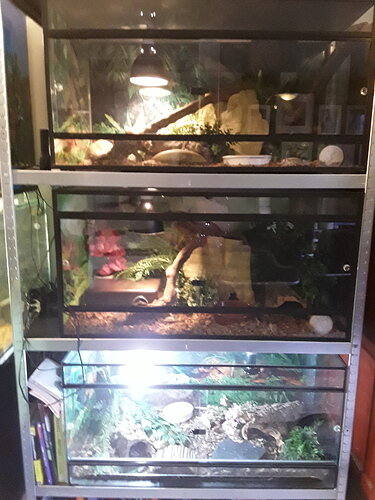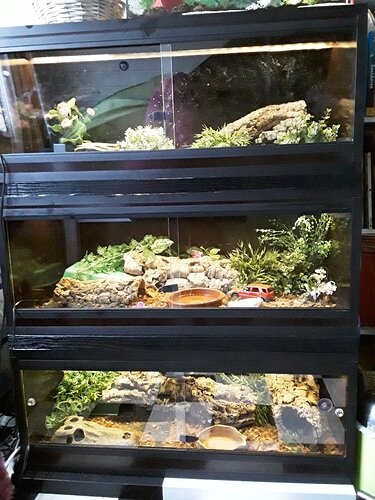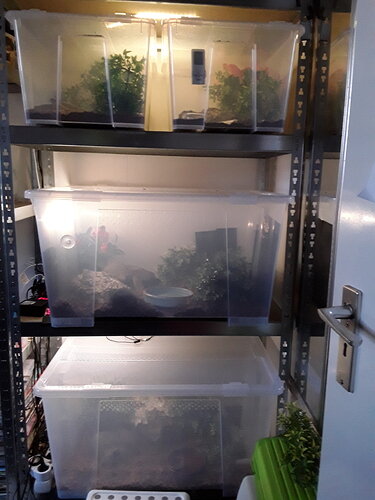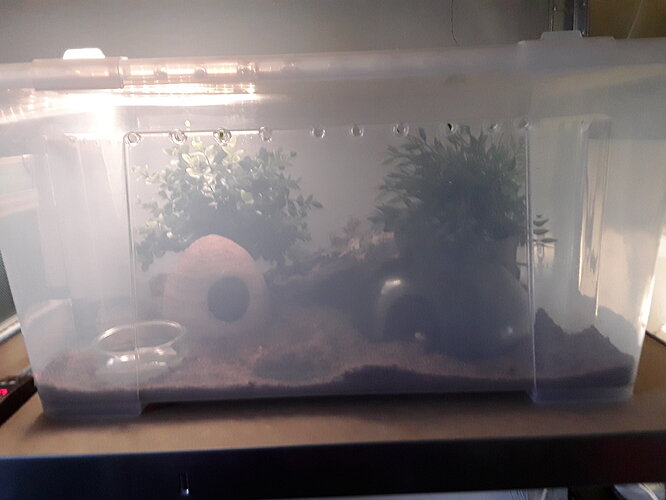I’m keeping ball pythons now for about two years and would love to start breeding next season. I gathered now a small group of 9 ball pythons with genes I’ll like to work with and am planning on one extra male. I’m only really debating on what enclosure to use for them and what is best for breeding.
I know most breeders use tubs, but to start with a really professional tub system is not an option so if I want to use tubs I have to use the one that are for household purposes. I found a type of cupboard that has shelves you can put in any place you want. The max size tubs I found in floorspace inside is about 60 liter, aprox. 75 cm length, 45 cm wide and 17 cm height . It looks to me so small for a adult ball python to live in for his/her whole life. Especially because the do seem to “enjoy” climbing around at night.
The alternative is wooden terrariums I can pille on top of each other. I have three of them in the size 100 cm x 50 cm x 40cm and can get more if needed/wanted. It gives them more space and chance for more natural set up but I don’t know if the snakes will not feel to exposed when they are breeding and have to lay their eggs and get problems with that.
I don’t have an abundance of space and have to make a plan for the future about what to do. Do I go for more wooden enclosures or are the tubs big enough and give better chance for breeding?
To give an idea about my housing here some pictures of the present situation.
These are in the living room. Top is my super mojave ball python, underneath my 1,5 year old boa and down my blue tongue skink. Both the blue tongue skink and boa need most likely more floor space in the future so I want to start replacing them for wooden terrariums in the long run because you can pille them on top of each other. these are the three wooden terrariums in my sons room. He loves to watch them from his bed before falling asleep. this is a simple shelve system with ikea 130 liter samla boxes for the bigger ones and 45 liter for the young ones.
I have a second houshold rack with only our youngest black pewter boy on it.
So I would really love to hear your advice on this. Is a tub size enough for an adult ball python to spend his/her whole life, or would you go for the more natural wooden ones? And for breeding, what would your advise be, tubs or can they also breed well in the natural but more exposed setup, with mayby some removable glasfoil against the windows when the are breeding? Or is it better to go for a thirth options, to keep the ones who are breeding in tubs and the ones that are not in terrariums so at least part of their live they have space to climb, and when they are breading they still have a more tight space and less exposure. But I don’t know if the change will not bee good for them. Since my house is not to big I was planning to max breed like 3 females per year. So all can have a year off in between and have enough space to shelter the hatchlings even if they don’t sell immediately.
I hope you can help me with this




